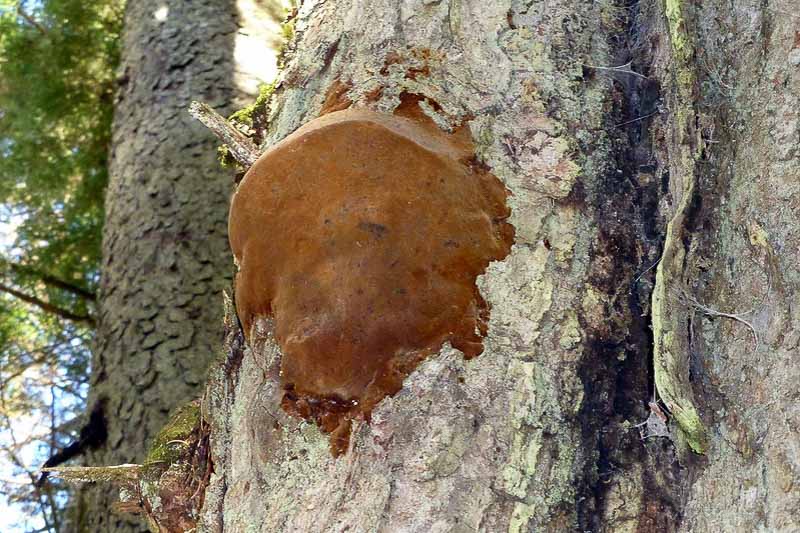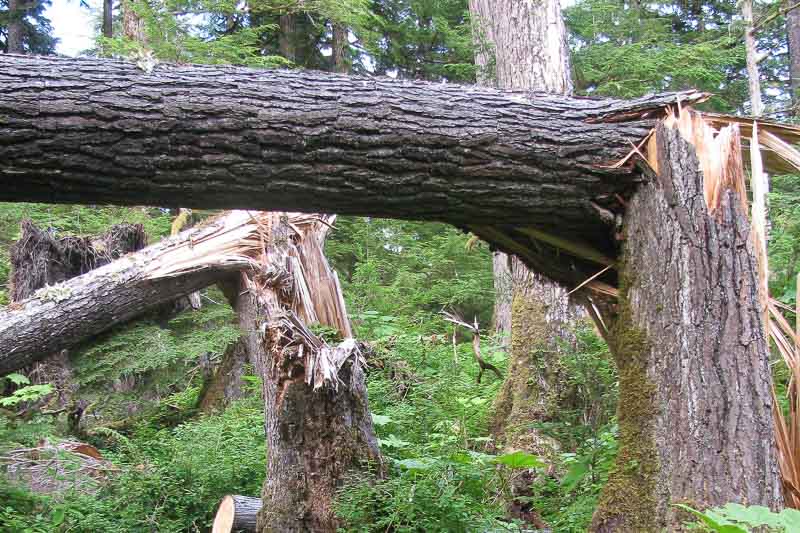Heart rot is a fungal disease that causes decay and degradation of the central core (heartwood) of trees, leading to structural weaknesses and potential hazards.
Heart rot is a type of fungal disease that affects the heartwood of trees, which is the older, non-living central wood of the tree. Heart rot can be a significant disease in older or damaged trees and can lead to structural instability and tree death.
Heart rot affects a wide range of tree species, including oaks, maples, birches, firs, and many others. The disease is most prevalent in areas with high rainfall and humidity, as these conditions promote fungal growth.
Many types of heart rot are caused by different fungal species. Some of the more common types include:
It’s important to remember that these fungi are typically opportunistic and mostly affect trees that are already stressed or injured. Maintaining the overall health of trees and avoiding unnecessary wounding can help prevent these diseases.
External symptoms of heart rot can be difficult to detect, especially in early stages of the disease. Potential signs include conks (fruiting bodies of the fungus) growing on the tree, often at the site of an old injury or branch removal. On the inside, the wood becomes discolored and degrades, which can sometimes be seen in fallen trees or during tree removal.

Heart rot is primarily caused by fungal pathogens. These fungi usually enter the tree through wounds or broken branches. Once inside, they start decomposing the heartwood of the tree, which is not protected by the tree’s immune system as it consists of dead cells.
Heart rot can severely damage trees, leading to structural instability and potentially tree death. As the disease progresses, trees can become more susceptible to windthrow and other types of damage. Detection typically involves looking for external signs of the disease, such as conks, or using specialized tools to assess the internal health of the tree.

Preventing heart rot is generally about maintaining the health and vitality of your trees, as well as minimizing damage that could provide entry points for the fungi causing heart rot. Here are a few strategies:
Remember that it’s not always possible to prevent heart rot completely, especially in older trees. If a tree is severely affected by heart rot, it may be best to remove it to prevent the disease from spreading and to eliminate a potential hazard.
Create a membership account to save your garden designs and to view them on any device.
Becoming a contributing member of Gardenia is easy and can be done in just a few minutes. If you provide us with your name, email address and the payment of a modest $25 annual membership fee, you will become a full member, enabling you to design and save up to 25 of your garden design ideas.
Join now and start creating your dream garden!
Create a membership account to save your garden designs and to view them on any device.
Becoming a contributing member of Gardenia is easy and can be done in just a few minutes. If you provide us with your name, email address and the payment of a modest $25 annual membership fee, you will become a full member, enabling you to design and save up to 25 of your garden design ideas.
Join now and start creating your dream garden!